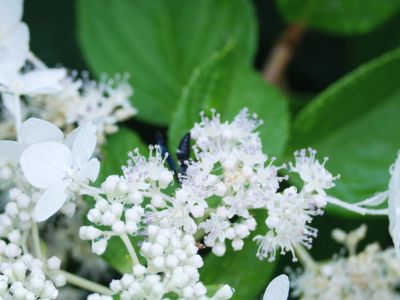Viburnums for Cold Climates
Viburnums are a gardener’s best friend. They come to the rescue when you need a plant for a dry or very wet area. You’ll find cold hardy viburnums that thrive in direct, full sun as well as partial shade. Many of the 150 species of viburnum are native to this country. In general, viburnums grow in USDA plant hardiness zones 2 to 9. Zone 2 is the coldest zone you’ll find in the country. That means that you are sure to find a good selection of viburnum shrubs in zone 4. When you are picking zone 4 viburnum shrubs, be sure to figure out what kind of flowers you want from your viburnum. While most viburnums grow blossoms in spring, the flowers vary from one species to another. Most viburnums flower in spring. Some are fragrant, some are not. Flower color ranges from white through ivory to pink. The shape of the flowers differ as well. Some species bear ornamental fruits in red, blue, black, or yellow.
Viburnum Shrubs in Zone 4
When you go shopping for viburnum shrubs in zone 4, prepare to be choosy. You’ll find many viburnum varieties for zone 4 with different features. One group of viburnums for cold climates are known as American Cranberry bush (Viburnum trilobum). These plants have maple tree-like leaves and white, flat-top spring flowers. After the blossoms expect edible berries. Other zone 4 viburnum shrubs include Arrowwood (Viburnum dentatum) and Blackhaw (Viburnum prunifolium). Both grow to about 12 feet (4 m.) tall and wide. The former has white flowers, while the latter offers creamy white blooms. The flowers of both types of zone 4 viburnum shrubs are followed by blue-black fruit. European varieties also qualify as viburnums for cold climates. Compact European grows to 6 feet (2 m.) tall and wide and offers fall color. Dwarf European species get only 2 feet (61 cm.) tall and rarely flowers or fruits. In contrast, common snowball offers large, double flowers in rounded clusters. These viburnum varieties for zone 4 don’t promise much fall color.
